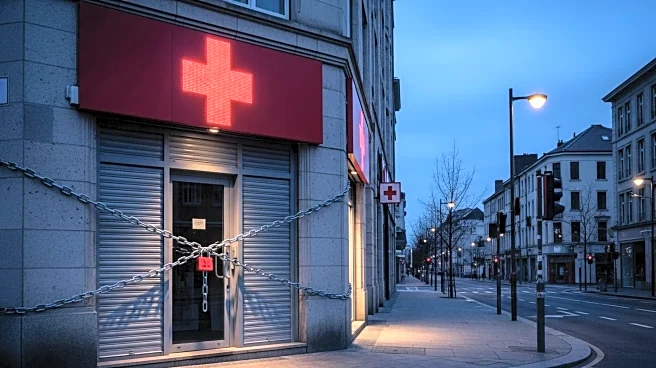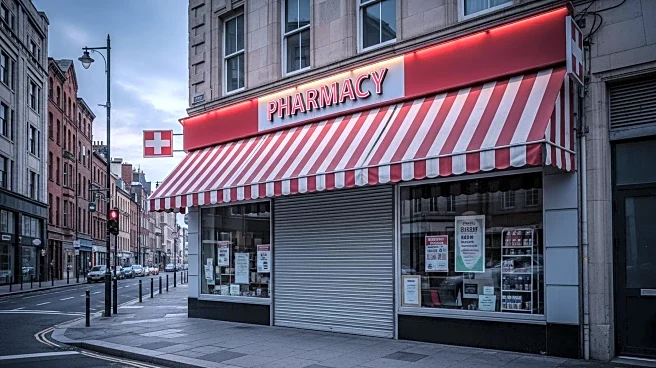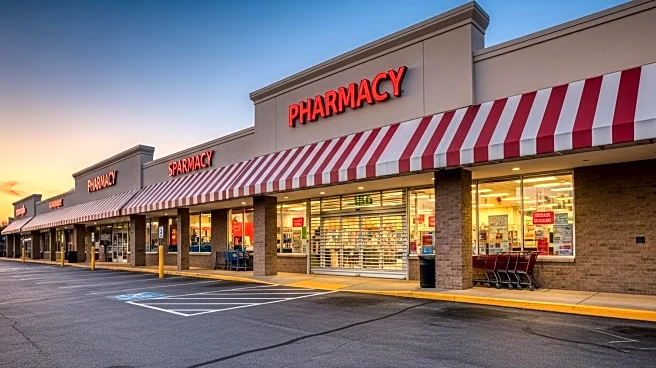What's Happening?
Rite Aid, once one of the largest pharmacy chains in the United States, has closed its final locations following a failed attempt to recover from bankruptcy. The company initially emerged from bankruptcy in September 2024 after closing hundreds of stores, but filed for bankruptcy again less than a year later. In May, Rite Aid secured $2 billion in financing while seeking a buyer to keep some locations open. Subsequently, the company sold its pharmacy services to competitors such as Walgreens, CVS, Kroger, and Albertsons, which now manage customers' prescription records and refills. Despite these efforts, Rite Aid's store count dwindled from 2,100 several years ago to fewer than 100 by this week. A limited number of locations will remain open under a new name.
Why It's Important?
The closure of Rite Aid stores could exacerbate the issue of 'pharmacy deserts' in the United States, where access to pharmacies is limited. According to a 2024 Ohio State University study, 46 percent of U.S. counties are considered pharmacy deserts, which can lead to lower medication adherence among patients. This is particularly concerning for socially vulnerable communities that may lack transportation or internet access to find alternative pharmacy options. Pharmacies often provide essential services such as diagnostics, preventive care, and emergency services, and their absence could increase barriers to accessing primary healthcare needs in affected regions.
What's Next?
As Rite Aid transitions its remaining locations to operate under a new name, the impact on pharmacy access in affected areas remains a concern. Competitors like Walgreens, CVS, Kroger, and Albertsons will continue to handle prescription services for former Rite Aid customers. The healthcare industry may need to address the growing issue of pharmacy deserts and explore solutions to improve access to medications and healthcare services in underserved areas.
Beyond the Headlines
The closure of Rite Aid highlights broader challenges in the retail pharmacy sector, including financial instability and the need for strategic partnerships to sustain operations. The shift in pharmacy services to major competitors may lead to increased consolidation in the industry, potentially affecting pricing and service availability. Additionally, the situation underscores the importance of addressing healthcare access disparities in rural and underserved communities.










